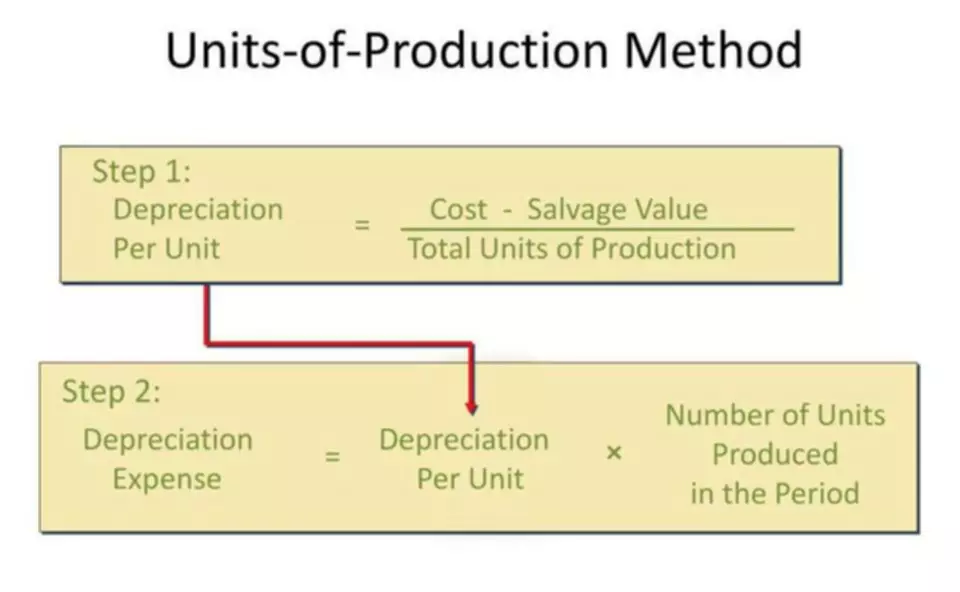Content

As an alternative to looking at how quickly an investment is paid back, and given the drawback outline above, it may be better for firms to look at the internal rate of return (IRR) when comparing projects. The material and labor cost for the construction of the dryer is $500, with an annual interest rate of 7%, an inflation rate of 4%, and the first-year saving of $172. Where c is the capital cost ($), s is the saving ($) during the first year of the solar dryer, d is the interest rate on long-term investments, and i is the inflation rate. Where r is the annual interest rate, e is the annual inflation rate for the price of energy, and n is the number of years for calculating the cumulative savings. Increasing your prices is not the only way to make more revenue from customers.
How do you calculate payback period?
The payback period is calculated by dividing the amount of the investment by the annual cash flow.
This is because of its budding earning potential (due to interest that can be earned the quicker it is received). A product or service may require time to grow and reach a bigger audience through positive word of mouth, for example. Failing to acknowledge this potential could cause companies to overlook valuable opportunities.
How to calculate payback period
By improving how you monetize your customers, you have the potential to increase customers’ lifetime values and earn more revenue from customers at a faster rate. Whilst the time value of money can be rectified by applying a weighted average cost of capital discount, it is generally agreed that this tool for investment decisions should not be used in isolation. Most capital budgeting formulas, such as net present value (NPV), internal rate of return (IRR), and discounted cash flow, consider the TVM. So if you pay an investor tomorrow, it must include an opportunity cost.

Calculating the payback period for the potential investment is essential. Capital equipment is purchased to increase cash flow by saving money or earning money from the asset purchased. For example, let’s say you’re currently leasing space in a 25-year-old building for $10,000 a month, but you can purchase a newer building for $400,000, with payments of $4,000 a month. Below is a business case in which you will play the role of the chief managerial accountant advising the CEO and the board of directors about a key strategic investment opportunity. This will allow you to demonstrate your ability to compute the payback period for various investments and interpret your findings.
Evaluation of the Payback Method
In order to account for the time value of money, the discounted payback period must be used to discount the cash inflows of the project at the proper interest rate. First, the method ignores the concept of time value of money in its calculation. This means that the method assumes that a dollar now is worth the same as a dollar in 10 years, which is not true. Second, the method only consider cashflows until the investment is recovered.
Most broadly speaking, the higher the IRR, the more desirable the investment opportunity is. IRR is calculated using the same formula as the net present value (NPV). The payback period in capital budgeting is the amount of time it takes for your company to recover the cost of acquiring one customer. For example, a customer that costs $350 to acquire and contributes $25/month, or $300/year, has a payback period of 13.9 months. As time increases, a customer pays back more of the costs it took to acquire them in the first place – their customer acquisition cost (CAC) – through their incremental subscription payments.
How to apply the payback period in practice?
For instance, if it costs $1 million to build a product and makes $60,000 profit before 30% tax but after depreciation of 10%, the payback period will be as follows. In essence, the payback period is used very similarly to a Breakeven Analysis, but instead of the number of units to cover fixed costs, it considers the amount of time required to return an investment. The sum of investment (I) can be calculated considering the initial investment cost (C) with interest and the number of operating years (n).
What is the payback period?
Payback period is defined as the number of years required to recover the original cash investment. In other words, it is the period of time at the end of which a machine, facility, or other investment has produced sufficient net revenue to recover its investment costs.
If we divide $1 million by $250,000, we arrive at a payback period of four years for this investment. Average cash flows represent the money going into and out of the investment. Inflows are any items that go into the investment, such as deposits, dividends, or earnings.
How the payback period calculation can help your business
To overcome the limitations of the payback period, you can use other methods that complement or supplement the payback period. For example, you can use the net present value (NPV), which discounts the future cash flow by a certain interest rate and subtracts the initial cost to find the present value of the project or investment. You can also use the internal rate of return (IRR), which is the interest rate that makes the NPV equal to zero.

Perhaps the simplest method for evaluating the feasibility of undertaking a potential investment or project, the payback period is a fundamental capital budgeting tool in corporate finance. A higher payback period means it will take longer for a company to cover its initial investment. https://www.bookstime.com/articles/payback-period All else being equal, it’s usually better for a company to have a lower payback period as this typically represents a less risky investment. The quicker a company can recoup its initial investment, the less exposure the company has to a potential loss on the endeavor.
This is the simplest and easiest way to understand but it does not give us the real picture as it does not consider ther time value of money or the cash flows occurring after PB period. There is no clear-cut rule regarding a minimum SPP to accept the project. Payback period shows the length of time required to repay the total initial investment through investment cash flows.
What is the formula payback period of cash flow?
First, input the initial investment into a cell (e.g., A3). Then, enter the annual cash flow into another (e.g., A4). To calculate the payback period, enter the following formula in an empty cell: "=A3/A4" as the payback period is calculated by dividing the initial investment by the annual cash inflow.
The breakeven point is the price or value that an investment or project must rise to cover the initial costs or outlay. Depending on the calculated payback period of a project, management can decide to either accept or reject the project. An investment project will be accepted if the payback period is less than or equal to the management’s maximum desired payback period. A payback period is the length of time a business expects to pass before it recovers its initial investment in a product or service. The payback period is the time it will take for your business to recoup invested funds.
For example, if you have three possible investments, one will pay back your initial investment in 5 years, while the other two take 15 and 25 years, respectively. Then, it would make sense to choose the one that will pay back in five years because that helps you get a return on your money sooner. Since IRR does not take risk into account, it should be looked at in conjunction with the payback period to determine which project is most attractive. The Payback Period shows how long it takes for a business to recoup an investment. This type of analysis allows firms to compare alternative investment opportunities and decide on a project that returns its investment in the shortest time if that criteria is important to them. Unless you’re stripping out canceled subscriptions from your payback period calculation, then churn is going to hurt it badly.
- It does not account for the time value of money, the effects of inflation, or the complexity of investments that may have unequal cash flow over time.
- Since the time frame of our example is not mentioned, we can assume that one month has 30 days.
- CFI is on a mission to enable anyone to be a great financial analyst and have a great career path.
- The payback period is the expected waiting period for a business before the initial investments in any product or project are retrieved.
- The payback period in capital budgeting is the amount of time it takes for your company to recover the cost of acquiring one customer.
- This means that the method assumes that a dollar now is worth the same as a dollar in 10 years, which is not true.
If you are looking to make a profit off of a potential investment, the payback period is essential because it determines how much time you must wait before turning a profit. While calculating the payback period, we ignore the basic valuation of 2.5 lakh dollars over time. In other words, we fix the profitability of each year, but we place the valuation of that particular amount over the period of time. As a result, the payback period fails to capture the diminishing value of currency over increasing time.
Looking at the example investment project in the diagram above, the key columns to examine are the annual “cash flow” and “cumulative cash flow” columns. Payback focuses on cash flows and looks at the cumulative cash flow of the investment up to the point at which the original investment has been recouped from the investment cash flows. The break-even point focuses on the amount of revenue required to achieve a no-profit, no-loss scenario.
- If you don’t know how each acquisition affects your net cash flow, you’re sailing in a SaaS sea with no sails.
- As you can see in the example below, a DCF model is used to graph the payback period (middle graph below).
- Moreover, neither time value of money nor opportunity costs are taken into account in the concept.
- Editorial content from The Ascent is separate from The Motley Fool editorial content and is created by a different analyst team.
- Whilst the time value of money can be rectified by applying a weighted average cost of capital discount, it is generally agreed that this tool for investment decisions should not be used in isolation.
- Depreciation is an essential factor to consider while accounting and forecasting for any business.
- By aggregating them all together, you can skew the calculation and get a misleading measurement.
